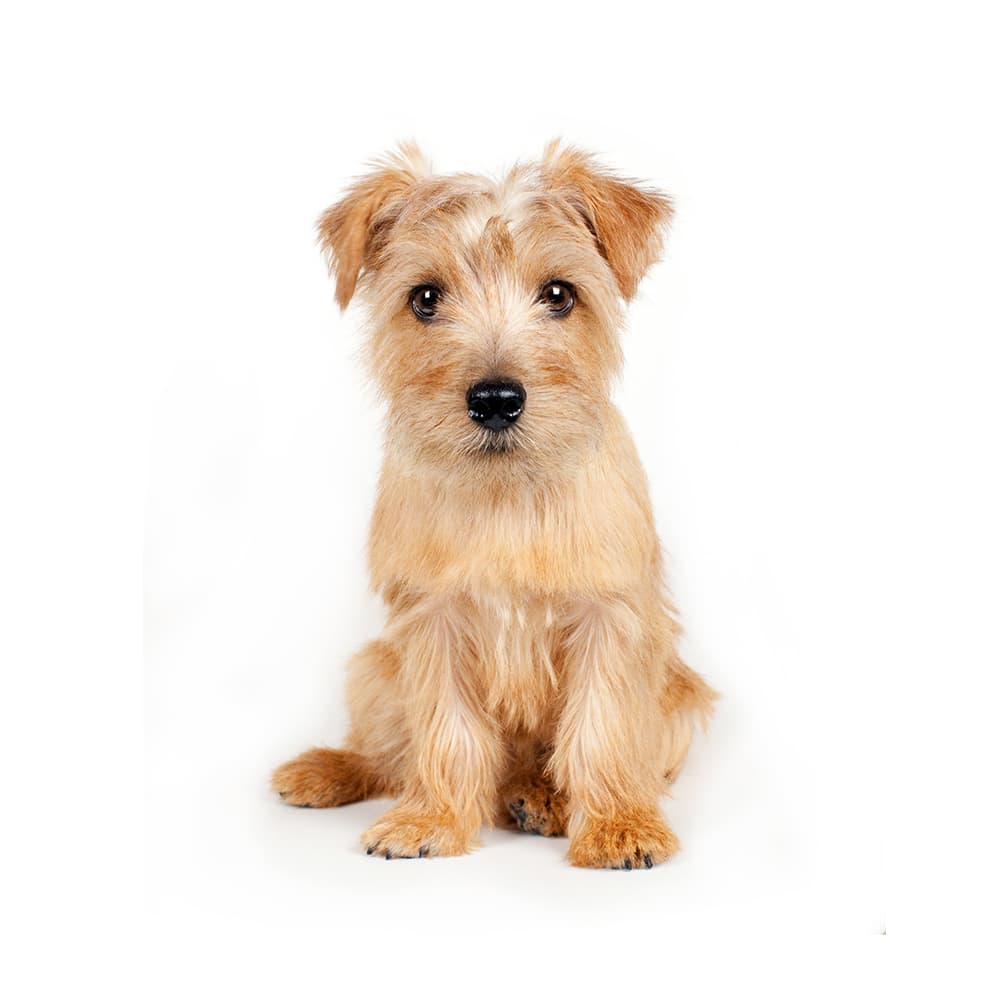Discover your dog's connection to this breed and 200+ others


Discover your dog's connection to this breed and 200+ others



The Norfolk Terrier is a small, robust, and energetic breed known for its hardy nature and charming personality. They are one of the smallest working terriers but are quite robust and hearty for their size. The breed is often confused with the Norwich Terrier, as they were once considered the same breed. The Norfolk Terrier originates from Great Britain, specifically from the East Anglia region in England. The breed developed in the late 19th and early 20th centuries as a working terrier used for controlling the vermin population around barns and stables. The Norfolk Terrier and the Norwich Terrier were originally categorized as a single breed under the Norwich Terrier name, with two types distinguished by their ear type - prick ears (Norwich) and drop ears (Norfolk). They were separated into two distinct breeds in 1964 by the English Kennel Club and in 1979 by the American Kennel Club.
Norfolk Terriers can suffer from degenerative myelopathy and progressive rod-cone degeneration. They may also be susceptible to Mitral Valve Disease, hip dysplasia, and patellar luxation. Other specific hereditary conditions for which they should be tested include congenital macrothrombocytopenia, ichthyosis (epidermolytic hyperkeratosis), and muscular dystrophy.
Norfolk Terriers are known for their spirited, good-natured, and loyal personalities. They are generally good with children and other dogs, making them suitable for families. They're highly intelligent, trainable, and love to please their owners, although they can exhibit the independent nature characteristic of terriers. As a working terrier, the Norfolk is energetic and enjoys regular exercise, but they also adapt well to various living conditions, including city life, as long as they get enough physical and mental stimulation.
A canine genetic lineage is a group of individuals or entire breeds that descended from common ancestors predating modern breed formation. Often these lineages are associated with a ‘type’ of dog with a unique historical working role and associated behaviors (e.g., herding, scent hunting, etc.).
Terriers were bred to hunt pests like rats, foxes, and badgers. Terriers are tenacious and fearless with high energy levels, strong prey drive, and feisty temperaments which all help in their hunting abilities. Terriers were used as mighty hunters in both urban and rural settings. Terriers have natural hunting instincts and protective tendencies.
Example breeds with ancestry from this lineage include Jack Russell Terrier, Scottish Terrier, and Yorkshire Terrier.
Before it was recognized as a distinct breed, the Norfolk Terrier was often referred to as the Norwich Terrier (drop-eared variety). Other historical names include the Trumpington Terrier and Cantab Terrier.
While Norfolk Terriers are small, they're robust and were originally bred for catching rats and other small vermin.
They became popular among students at Cambridge University in the late 19th and early 20th centuries when they were called Cantab Terriers.
Norfolk Terriers are one of the smallest working terriers but have a surprisingly big bark for their size.
https://www.akc.org/dog-breeds/norfolk-terrier/
https://www.ukcdogs.com/norfolk-terrier https://www.fci.be/en/nomenclature/NORFOLK-TERRIER-272.html
https://www.hillspet.com/dog-care/dog-breeds/norfolk-terrier
https://vgl.ucdavis.edu/breed/norfolk-terrier
Recommended by top vets with decades of experience
21 breeds
64 genetic health markers
50 genetic trait markers
